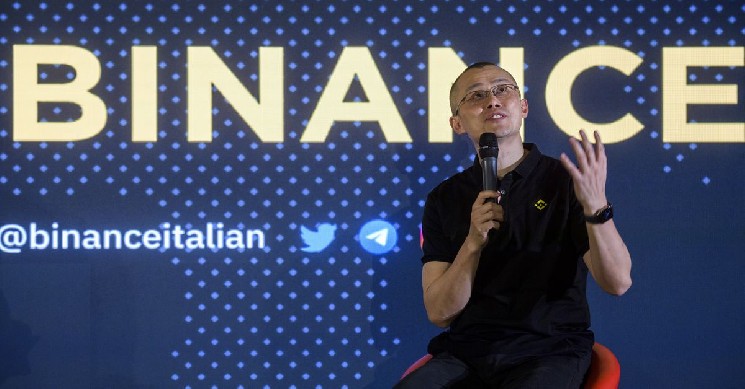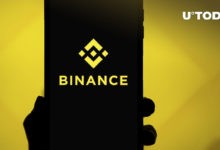Binance Founder ‘CZ’ Insists We Can Trust His Crypto Exchange – but Can We?

Monday’s arrest of Sam Bankman-Fried (“SBF”) capped off a historic period in the world of memes, money and mayhem that is the cryptocurrency industry. The arrest of the FTX exchange founder drew mainstream headlines that greatly overshadowed the other big crypto story of the day: questions around the solvency of Binance, the largest cryptocurrency exchange by trading volume.
If the collapse of FTX was catastrophic for the burgeoning crypto industry, a collapse of Binance would be apocalyptic.
This article originally appeared in Valid Points, CoinDesk’s weekly newsletter breaking down Ethereum’s evolution and its impact on crypto markets. Subscribe to get it in your inbox every Wednesday.
FTX – at one point the third-largest crypto exchange by spot volume – processed around $37 billion in spot trades in October, the month before it collapsed, according to CryptoCompare. The second-largest exchange, Coinbase, processed $47 billion that month. Meanwhile, Binance’s spot trading volume in October totaled a whopping $390 billion.
For over a month, Binance CEO Chanpeng Zhao (“CZ”), like other exchange leaders, has been on a quest to convince users that his product is wholly different from FTX – the SBF-led exchange that became insolvent after misusing user funds.
Like FTX, though, Binance is largely unregulated, and not everyone is buying CZ’s repeated assurances of propriety. Over the past week, a shoddy audit of the exchange’s reserves – followed by news of criminal investigations into Binance executives – alarmed users enough to catalyze record withdrawals from the platform.
While Binance appears to be weathering the storm so far (there are no glaring signs that the exchange has misappropriated user funds FTX-style), recent events have drawn attention to the fact that Binance, which exists beyond the scope of regulators and tracks customer holdings on its own servers rather than on public blockchains, asks for a tremendous amount of trust from its users in order to operate. In the “trustless” world of cryptocurrency, this is a bit hard to square.
Trusting Binance
The biggest players in crypto are centralized exchanges – platforms like FTX, Coinbase, Kraken and Binance – that take direct custody of user cryptocurrency (rather than leave tokens in a user’s own blockchain wallet) in order to facilitate trades.
After investors were burned by FTX – the largest crypto exchange to collapse after abusing the trust of its depositors – people have grown wary of trusting other, similarly centralized platforms. But not all cryptocurrency exchanges that custody user funds have earned the same degree of skepticism.
Unlike U.S.-regulated exchanges like Coinbase and Kraken, Binance (like FTX) operates in a sort of regulatory gray area. The firm was originally founded in China but left the country in 2017 just before its government banned cryptocurrency trading. Today, Binance deliberately obfuscates where it is headquartered.
While there are jurisdiction-specific versions of Binance, like Binance.US, which operate independently from the main Binance platform, the main, largely unregulated version of Binance is the biggest by far. (Binance.US doesn’t even rank among the top 10 crypto exchanges by spot trading volume.)
Coinbase, Kraken, Binance.US and other jurisdiction-specific Binance platforms make routine accounting disclosures and face strict oversight from regulators. The main Binance platform, however, isn’t subject to the same regulatory scrutiny as its peers. As such, it can offer relatively low fees along with products that it would be unable to run in the U.S. and many other countries – like sophisticated derivative contracts and margin trading facilities that allow users to borrow money in order to make bigger, riskier bets.
As a consequence of Binance’s regulation dodging, though, the platform’s users need to trust Binance’s word on whether their money is where it purports to be.
Record withdrawals
Fears of a Binance insolvency reached a fever pitch over the weekend after a much-derided “proof-of-reserves” report from the exchange failed to convince onlookers that it was fully collateralizing assets behind the scenes.
Widespread skepticism towards the report – which users criticized for its lack of thoroughness and selective disclosures – sparked record outflows from Binance, with investors pulling nearly a billion dollars from the exchange in a period of just 24 hours over the weekend.
Money continued to pour out of the exchange on Monday after a report from Reuters detailed a U.S. Department of Justice investigation into Binance – one of several ongoing probes into the firm from global law enforcement agencies. According to Reuters, federal prosecutors are weighing whether to charge Binance executives, including CZ, with money-laundering violations.
News of Binance’s legal troubles opened the floodgates even wider; users were soon criticizing Binance for everything from its ability to change the ledger of its “decentralized” BNB blockchain, to the solvency of “bridged” versions of BUSD, Binance’s stablecoin.
“Binance FUD” (meaning fear, uncertainty and doubt) briefly trended on Twitter.
The USDC pause
On Monday, Binance saw another $2 billion in net withdrawals from its platform – the largest withdrawal event for the exchange since this past June, according to crypto analytics firm Nansen.
The outflows were large enough to force Binance to temporarily pause withdrawals of USDC, the second-largest stablecoin – a vital instrument in crypto financial markets that stays “pegged” to the price of one dollar.
Binance said it needed to pause USDC withdrawals in order to facilitate a “token swap” of USDC stablecoins for its own BUSD stablecoins – a sort of practical measure necessary to loosen up liquidity for further withdrawals.
However, the move sparked worrying headlines, including one from CNBC, reflecting that some users saw the pause as yet another signal that Binance might not be fully collateralizing user assets behind the scenes. (Notably, pausing stablecoin withdrawals was one of the last actions FTX took before filing for bankruptcy.)
Despite the uproar, Binance’s explanation for why it paused USDC withdrawals is plausible on its face. Moreover, Nansen’s accounting of Binance-linked blockchain wallets shows that the exchange has at least $60 billion in on-chain reserves – more than enough liquidity to handle customer withdrawal demands and vastly more than FTX had (as a percentage of overall user assets) when it collapsed.
But without a full accounting of Binance’s assets and liabilities, the exchange’s health is impossible to judge definitively.
Why should Binance be trusted?
Despite Binance’s opaqueness, users continue to rely on the platform.
The largest crypto exchange offers users the ability to trade more kinds of tokens, with higher liquidity and lower fees, than virtually any other platform – centralized or decentralized. It also offers strategies that are inaccessible, in many jurisdictions, to anyone other than licensed investors.
But the fact that Binance is the only shop in town for certain trading activities isn’t the only reason why some investors continue to trust CZ with their money.
Wave Financial CEO David Siemer told CoinDesk that while he is wary of all centralized exchange platforms, he is relatively unconcerned that Binance will face FTX-type insolvency.
For one thing, says Siemer, Binance was founded in 2017 and simply has a longer track record than FTX, which was founded in 2019.
Siemer also noted that Binance has been relatively conservative in terms of the features it offers users – at least compared to FTX. “From a functionality standpoint,” said Siemer, “Binance rolls things out that are pretty tried and true.”
FTX, says Siemer, partially failed because it advertised a high-tech – but error-prone – cross-margining system. In essence, the system was supposed to allow a user to take multiple separate positions against a single pool of collateral; if one of a user’s bets went bust, the whole pool was subject to liquidation (meaning the FTX exchange would have automatically claimed the user’s collateral).
In Siemer’s experience, this system didn’t always work as advertised; users were sometimes able to make big bets that weren’t auto-liquidated when they should’ve been – meaning investors might have lost the exchange’s (and, it seems, other users’) money on bets that they should’ve lost.
Unlike FTX, Binance “[doesn’t] allow a lot of crazy, weird margining” features like cross-margining, said Siemer.
And then, says Siemer, there’s the fact that Binance “doesn’t have an Alameda.” Alameda Research was the SBF-linked trading firm that collapsed after it apparently invested (and lost) funds belonging to FTX users.
“Because [FTX] had Alameda,” said Siemer, “both sides were able to just kind of prop each other up for a long, long time.”
While it’s technically possible that Binance is using or loaning out user funds behind the scenes (the firm is apparently under investigation for money laundering), there’s no sister firm like Alameda to which Binance would have obviously funneled money.
The importance of PR
While one can find some differences between Binance and FTX, it’s impossible to know what’s really going on at Binance behind the scenes. CZ, for his part, seems acutely aware of the fact that his exchange will live or die based on the trust of its users.
Amid all the “FUD,” the Binance founder – at one point more of a behind-the-scenes operator – has become uncharacteristically active on social media in recent months as the market has soured and the FTX debacle has continued to unfold.
In between tweets defending Binance, CZ has also found time to joke around with his followers, and he recently retweeted a tweet from 2019 in which he explained that he was “a normal guy, nothing fancy” and aimed to “seek and provide positive energy.”
In this way, one finds a striking similarity between CZ and SBF, his one-time nemesis. Both founders realize that in a world of centralization and lax regulations – perception is everything.






 Bitcoin
Bitcoin  Ethereum
Ethereum  Tether
Tether  USDC
USDC  TRON
TRON  Dogecoin
Dogecoin  Cardano
Cardano  Bitcoin Cash
Bitcoin Cash  Chainlink
Chainlink  Monero
Monero  LEO Token
LEO Token  Stellar
Stellar  Zcash
Zcash  Litecoin
Litecoin  Hedera
Hedera  Dai
Dai  Cronos
Cronos  Tether Gold
Tether Gold  OKB
OKB  Ethereum Classic
Ethereum Classic  KuCoin
KuCoin  Gate
Gate  Algorand
Algorand  Cosmos Hub
Cosmos Hub  VeChain
VeChain  TrueUSD
TrueUSD  Tezos
Tezos  Dash
Dash  Stacks
Stacks  IOTA
IOTA  Basic Attention
Basic Attention  Theta Network
Theta Network  NEO
NEO  Decred
Decred  Synthetix
Synthetix  Qtum
Qtum  Ravencoin
Ravencoin  DigiByte
DigiByte  0x Protocol
0x Protocol  Nano
Nano  Zilliqa
Zilliqa  Siacoin
Siacoin  Numeraire
Numeraire  Waves
Waves  BUSD
BUSD  Status
Status  Pax Dollar
Pax Dollar  Enjin Coin
Enjin Coin  Ontology
Ontology  Hive
Hive  Lisk
Lisk  Steem
Steem  Huobi
Huobi  NEM
NEM  OMG Network
OMG Network  Bitcoin Gold
Bitcoin Gold  Augur
Augur  Ren
Ren  HUSD
HUSD